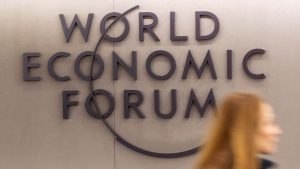Test- A Decade of PoSH Laws — hits, misses, and key learnings
Summary
After a slow start, corporates have now taken the PoSH Law seriously and, on an annual basis, make it a point to conduct training and workshops, observes Rainmaker Founder & CEO Antony Alex in a review of the Law implementation on its tenth year of introduction.
<p><span style=”font-weight: 400;”>Bhanwari Devi’s brutal gang rape arising out of and during the course of her employment, and the subsequent PIL that was filed, are possibly amongst the seminal moments in the modern history of the women’s movement. In terms of impact, while we are only at the 10 year mark of the Prevention of Sexual Harrassment Act (PoSH Law) and 26 years post the <a href=”https://en.wikipedia.org/wiki/Vishakha_and_others_v_State_of_Rajasthan”>Vishaka judgement</a>, this could be comparable to the successful anti-Sati campaign of <a href=”https://en.wikipedia.org/wiki/Raja_Ram_Mohan_Roy”>Dr Raja Ram Mohan Roy. </a></span></p><p><span style=”font-weight: 400;”>So what has this law really done? The PoSH Law has set up a mechanism that allows women to file complaints of sexual harassment with a committee (the Internal Committee or “the IC”) that comprises employees and an external member. Armed with the powers of a civil court, the Parliament has effectively replaced the ordinary civil court with the IC. </span></p><p><span style=”font-weight: 400;”>Not too many women were comfortable approaching the civil court with instances of sexual harassment to seek civil redressal, so the PoSH law and the redressal mechanism was a welcome relief for many women employees. The other key aspect is that the law mandates training and sensitisation of the IC and the workforce. After a slow start, corporates have now taken this seriously and, on an annual basis, make it a point to conduct training and workshops.</span></p><p><span style=”font-weight: 400;”>Let’s take a quick look at what’s worked and what we could possibly do better.</span></p><p><strong>Hits</strong> <ol> <li style=”font-weight: 400;” aria-level=”1″><span style=”font-weight: 400;”>1. <strong>Increased awareness of sexual harassment:</strong> The PoSH law has played a significant role in raising awareness of sexual harassment in the workplace. This has led to a greater understanding of what constitutes sexual harassment and the consequences of engaging in such behavior. Concepts like consent and quid pro quo are now being seriously discussed and debated across offices in our country.</span></li> </ol> <ol> <li style=”font-weight: 400;” aria-level=”1″><span style=”font-weight: 400;”>2. <strong>Proactiveness of courts:</strong> The Supreme Court (SC), in particular, has been proactive in interpreting the law and issuing directives, particularly in instances where there has been sluggishness in implementing the law or providing clarity. This has ensured that corporates implement the law. </span></li> </ol> <ol> <li style=”font-weight: 400;” aria-level=”1″><span style=”font-weight: 400;”>3. <strong>Discreet reporting mechanisms:</strong> One of the greatest benefits of the PoSH law is that it has established clear, accessible and discreet reporting mechanisms for those aggrieved of sexual harassment. This has made it easier for the aggrieved to come forward and seek redressal.</span></li> </ol> <ol> <li style=”font-weight: 400;” aria-level=”1″><span style=”font-weight: 400;”>4. <strong>Strict penalties for perpetrators and the organisations:</strong> The law has imposed strict penalties for perpetrators of sexual harassment. This has acted as a deterrent and has helped to create a safer workplace for all. </span></li> </ol> <strong>Misses</strong> <ol> <li style=”font-weight: 400;” aria-level=”1″><span style=”font-weight: 400;”>1. <strong>Challenges in implementation:</strong> While large and mid-size corporates have been fairly quick to implement the law in letter and spirit, quite a few smaller organisations have been tardy. Cost has been touted as the primary reason for only paying lip service to implementation of the law. This has made it much tougher for the aggrieved to access justice. </span></li> <li style=”font-weight: 400;” aria-level=”1″><span style=”font-weight: 400;”>2. <strong>Lack of clarity in certain provisions:</strong> Despite the SC’s proactiveness some of the provisions of the PoSH Act require greater clarity. For example, is payment of compensation by the Respondent mandatory?, should employers sit on ICs?, the status of internal appellate bodies, are just a few that come to mind. Some states are yet to even appoint appellate authorities, thereby delaying justice for both complainant and respondent, whoever wants to take up the matter on appeal from the IC’s recommendation.</span></li> <li style=”font-weight: 400;” aria-level=”1″><span style=”font-weight: 400;”>3. <strong>Delay in appointing District Officers:</strong> Even a decade after the passing of the PoSH Law, District Officers haven’t been appointed in all Districts, therefore, there is a lack of pressure/follow up on entities to comply with the Act. </span></li> <li style=”font-weight: 400;” aria-level=”1″><span style=”font-weight: 400;”>4. <strong>Inadequate protection for marginalised groups:</strong> Marginalised groups, such as women from lower socioeconomic backgrounds, migrant workers and LGBTQ+ individuals, may face additional barriers in accessing justice under the law. This is due to factors such as lack of awareness, language barriers and fear of retaliation. </span></li> </ol> <strong>Key Learnings</strong> <ol> <li style=”font-weight: 400;” aria-level=”1″><span style=”font-weight: 400;”>1. It is increasingly clear that the mandate of the Law asking for continuous training and sensitisation has worked very well. Now the ball is in the court of the government to ensure that this is consistently monitored by the District Officer and non-compliant organisations are penalised. </span></li> </ol> <ol> <li style=”font-weight: 400;” aria-level=”1″><span style=”font-weight: 400;”>2. There are still areas of the PoSH Law that require greater clarity in terms of implementation of the Law. The Government needs to hold consultations with the different stakeholders, and make suitable amendments to the Law and the Rules. </span></li> </ol> <ol> <li style=”font-weight: 400;” aria-level=”1″><span style=”font-weight: 400;”>3. Greater thought needs to be given to thinking through strategies to address the specific challenges faced by marginalised groups in accessing justice under the law. This may include targeted outreach, translation services and culturally sensitive training programs. </span></li> </ol> <strong>Conclusion</strong></p><p><span style=”font-weight: 400;”>It is clear that the PoSH Law has made significant strides in enabling aggrieved women to access the levers of justice. However, as with all laws, the PoSH Law also needs to keep pace with the constantly evolving corporate landscape. The Government needs to review and make suitable amendments to ensure that there is consistency and uniformity in the implementation of the Law. </span></p><p> </p><p>—<em>The author, Antony Alex, is Founder & CEO of Rainmaker, India’s leading culture and compliance learning solutions company. The views expressed are personal. </em></p>

Elon Musk forms several ‘X Holdings’ companies to fund potential Twitter buyout
3 Mins Read
Thursday’s filing dispelled some doubts, though Musk still has work to do. He and his advisers will spend the coming days vetting potential investors for the equity portion of his offer, according to people familiar with the matter









 Listen to the Article
Listen to the Article  Daily Newsletter
Daily Newsletter













